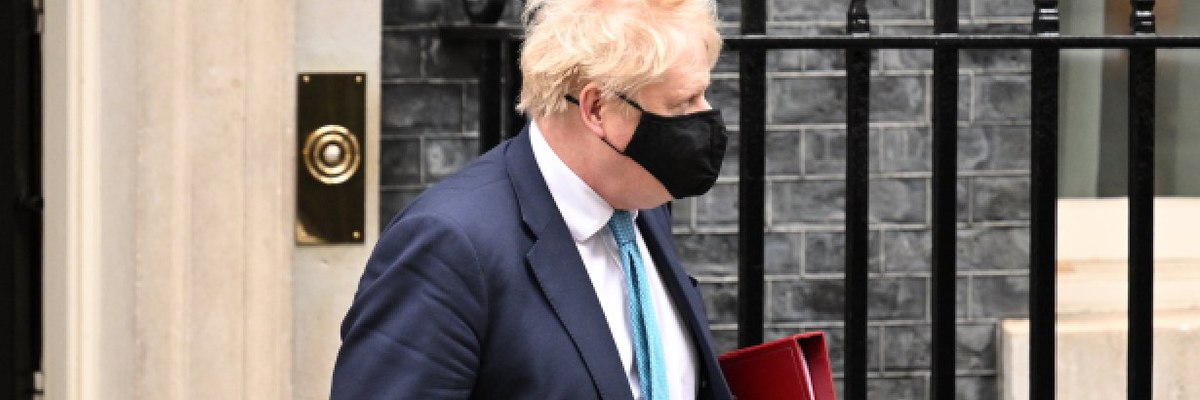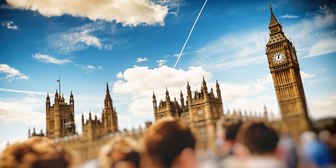The prime minister’s net score of -52 is eleven points lower than the Conservative party’s -41
YouGov reported last week that Boris Johnson’s net favourability had dropped to a record low of -52, following the continuous stories around rule-breaking parties at 10 Downing Street. Our latest figures showed just 20% of the public have a favourable opinion on the PM compared to 72% who feel unfavourable.
His popularity has been on the decline since spring last year, when he was viewed relatively positively due to vaccine optimism and loosening of restrictions. Heading into autumn these figures began to decline as this vaccine boost wore off, accelerating in the winter following the Owen Paterson lobbying scandal and the various ‘partygate’ stories.
As would be expected, leadership ratings generally correlate strongly with party ratings; if a party is doing well, the leader also tends to be doing well, and vice versa. Throughout his time as prime minister, Boris Johnson’s own favourability has tended to exceed that of his party.
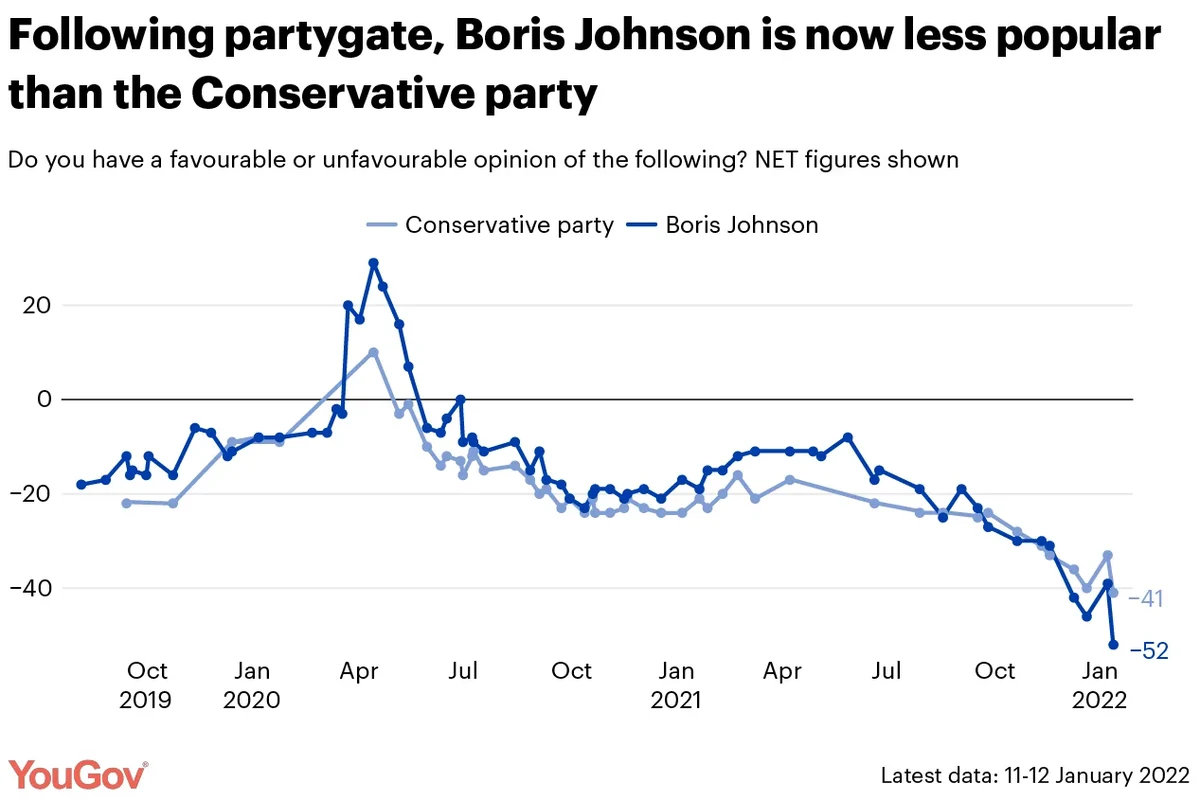
Immediately after the 2019 election the figures were broadly the same, perhaps unsurprising given this is when you’d expect a leader and party to be most synonymous with each other. But once COVID-19 first hit the UK, Johnson’s figures shot up at a much more extreme rate than the party, benefitting as a figurehead while the public rallied round the flag. While the gap did narrow fairly quickly, for most of the last two years the prime minister has been more popular than his party.
In summer 2021 the two converged, with changes in popularity tending to move at the same pace. However, the recent scandals starting in December have damaged Boris’s own brand far more than the Conservative Party, an indication that the public associate this latest issue more with the man than the party. On 18 November, just prior to the first story about lockdown parties, the Conservative party’s net favourability was at -33, two points lower than Johnson’s net score of -31. Fast forward to our figures last week, and while the party’s rating has dropped eight points to -41, this is far more of a modest fall compared to the PM’s twenty one point drop to -52.
How did other leaders fare?
Johnson’s predecessor had a fairly turbulent time in terms of personal ratings over her spell as Prime Minister. For Theresa May’s first few months in office she experienced very positive ratings, above those of her party. In the month after becoming party leader she had a net score of +12, significantly higher than her party’s score of -19. Her personal ratings came crashing down late in the 2017 general election campaign, and for most of the subsequent year she was less popular than the party. The ratings merged late 2018 and generally moved at the same pace until she left office in summer 2019.
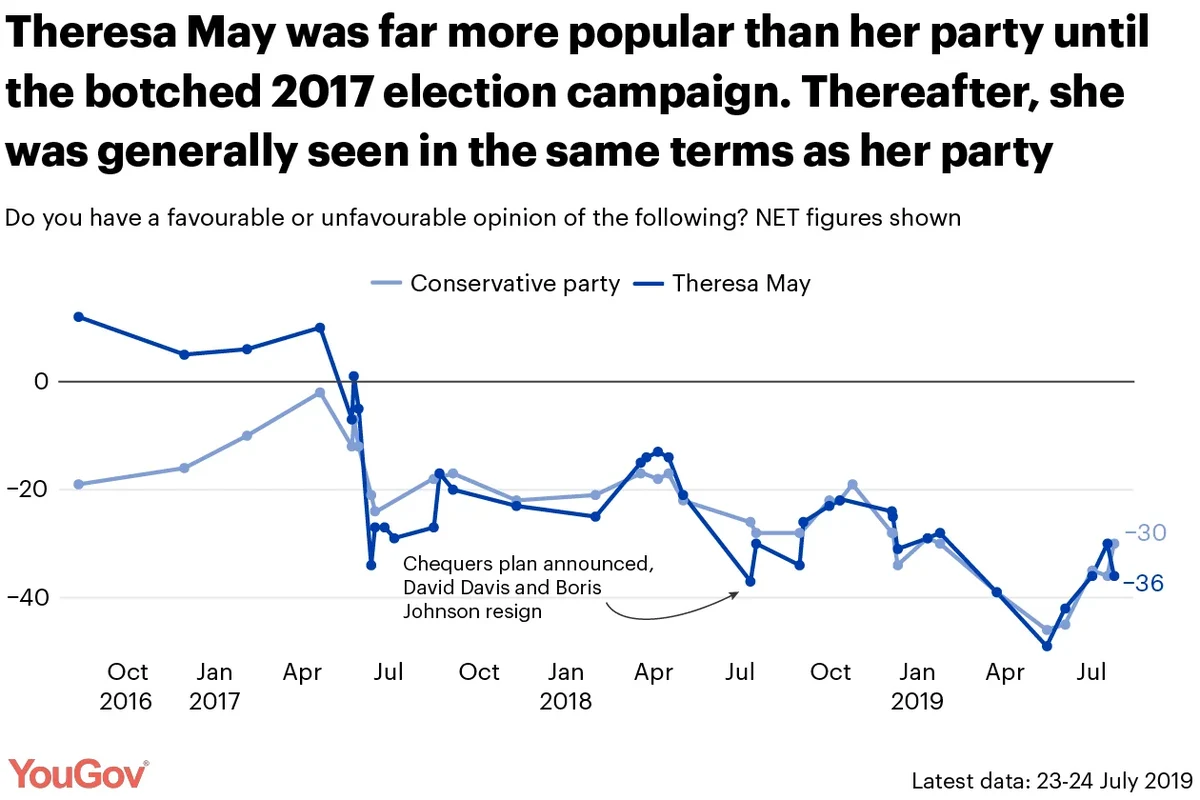
YouGov only started tracking favourability in 2016 and so do not have data for Jeremy Corbyn’s first year as Labour leader. Our first datapoint just before the 2016 Labour leadership election is the only time Corbyn was not below the Labour party in terms of NET favourability (-25 compared to -28). Since his victory over Owen Smith, he remained less popular with the public than the Labour party until he stepped down as leader. Even when Corbyn was relatively popular following the 2017 general election, the Labour party still polled better. The gap between leader and party widened in the latter stages of his premiership with our poll in January 2020 – just after the general election – putting the leader on -51, eighteen points below the Labour party on -33.
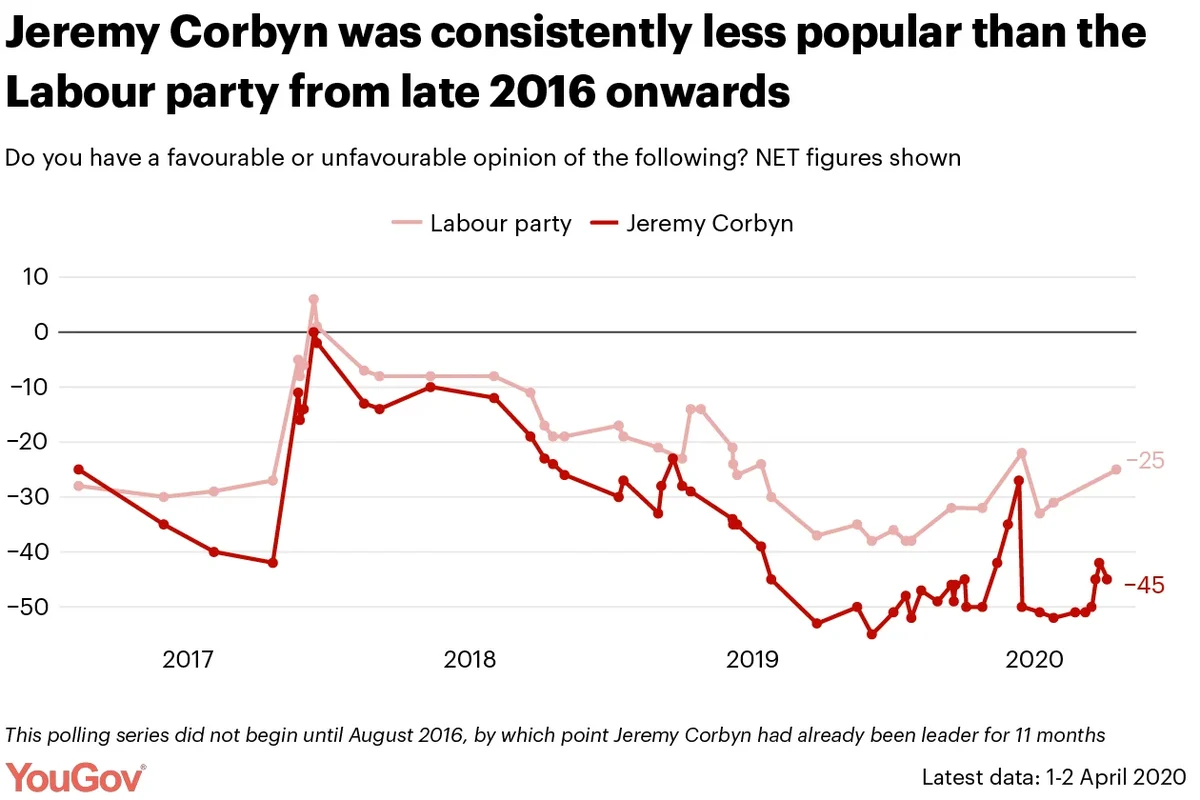
Keir Starmer’s personal net ratings ranked well above his party’s for much of his first year as leader of the opposition. Part of this was down to him being less known than the party, but even factoring this in the figures still showed he was more popular than the party during this honeymoon period. In April 2021 Starmer’s own rating began to fall while the party’s rating remained relatively stagnant and since last summer both have polled almost the same from June onwards.
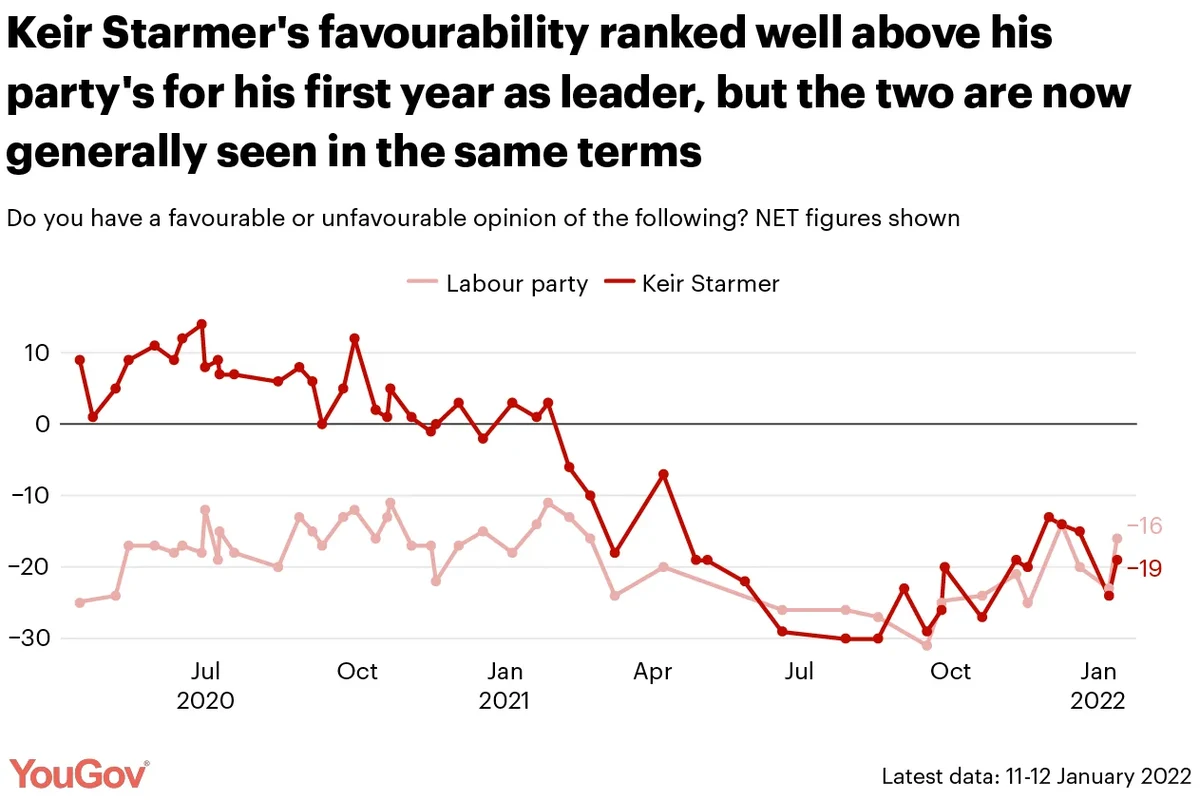
See full results here
